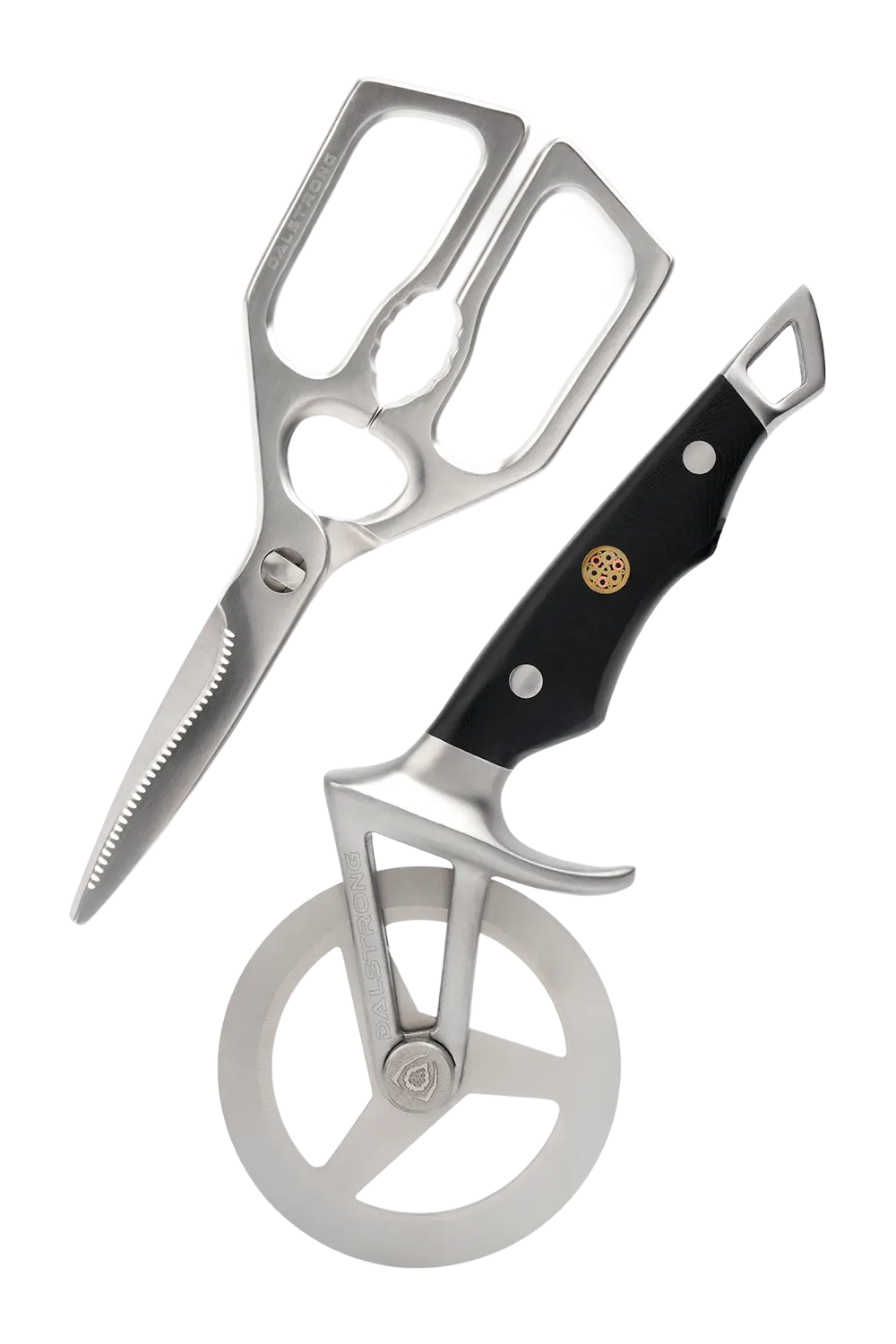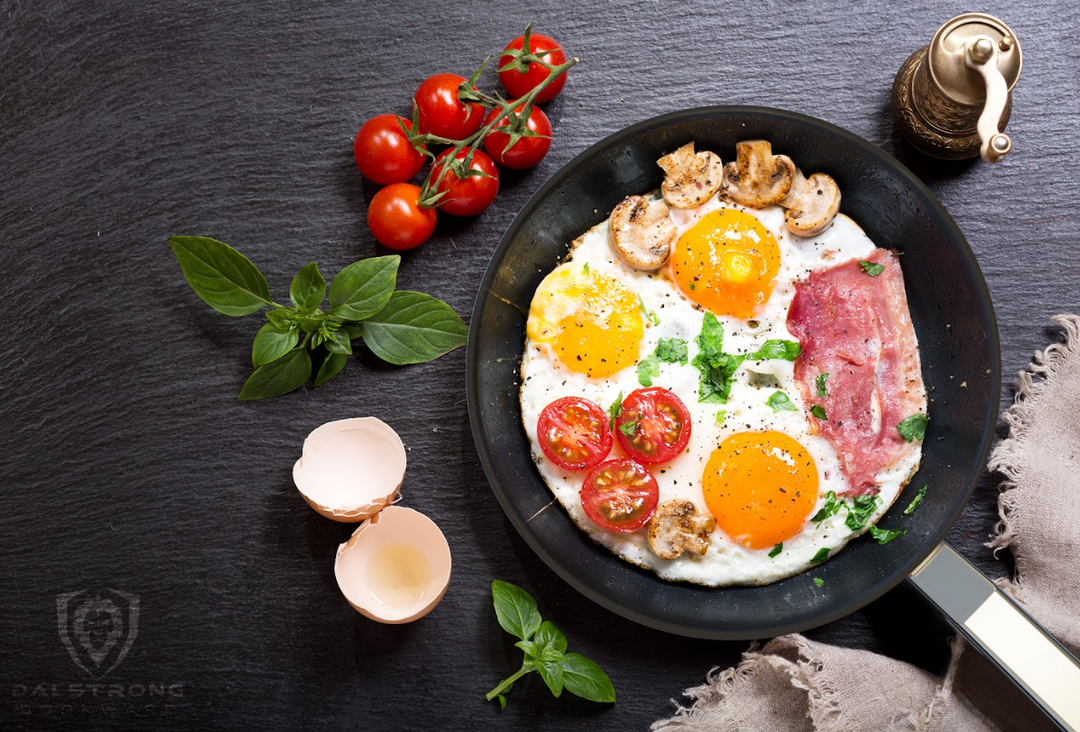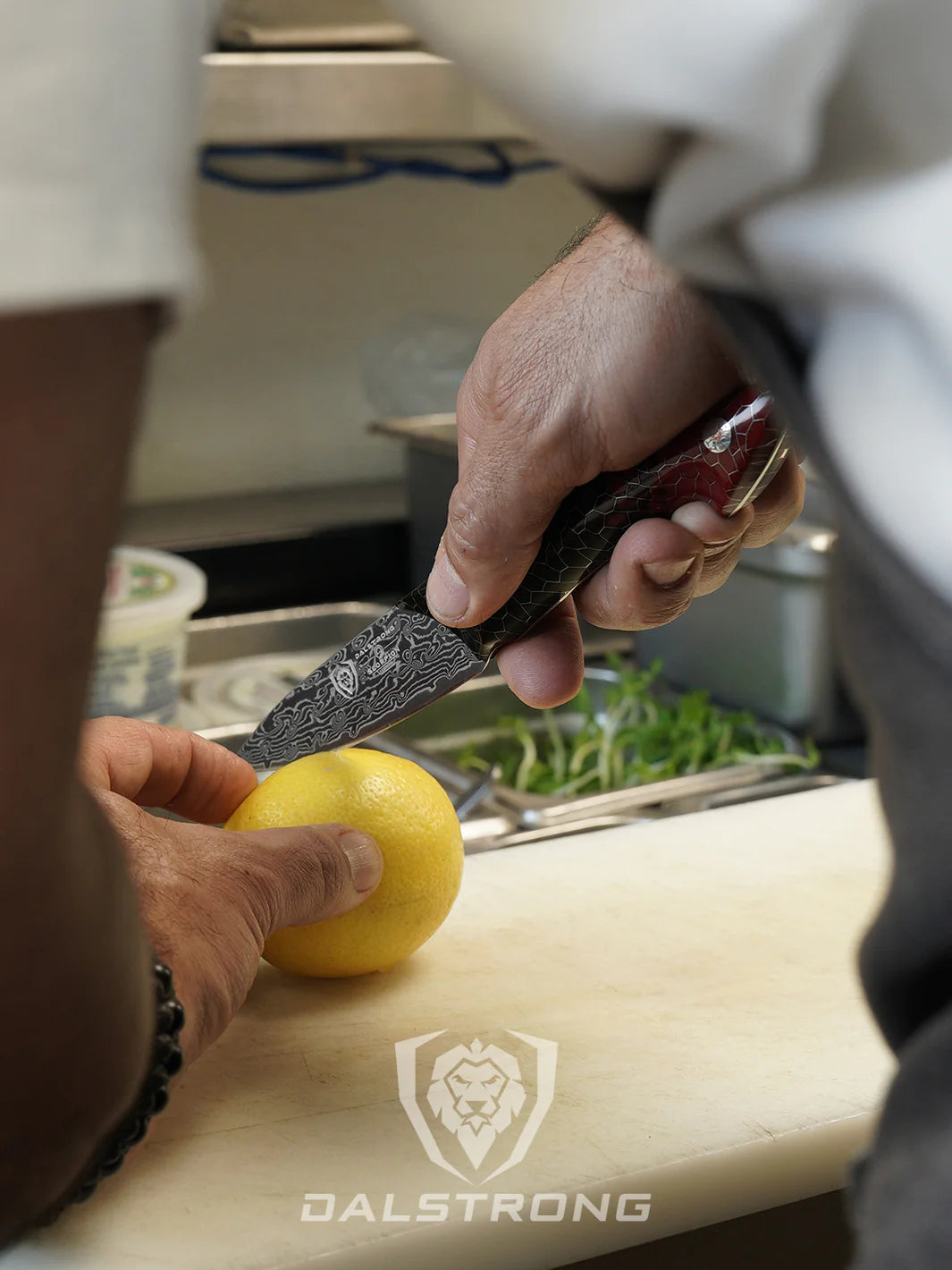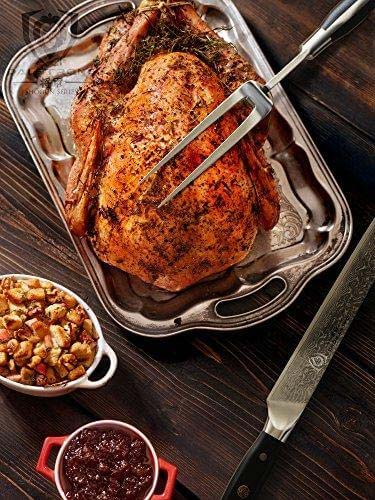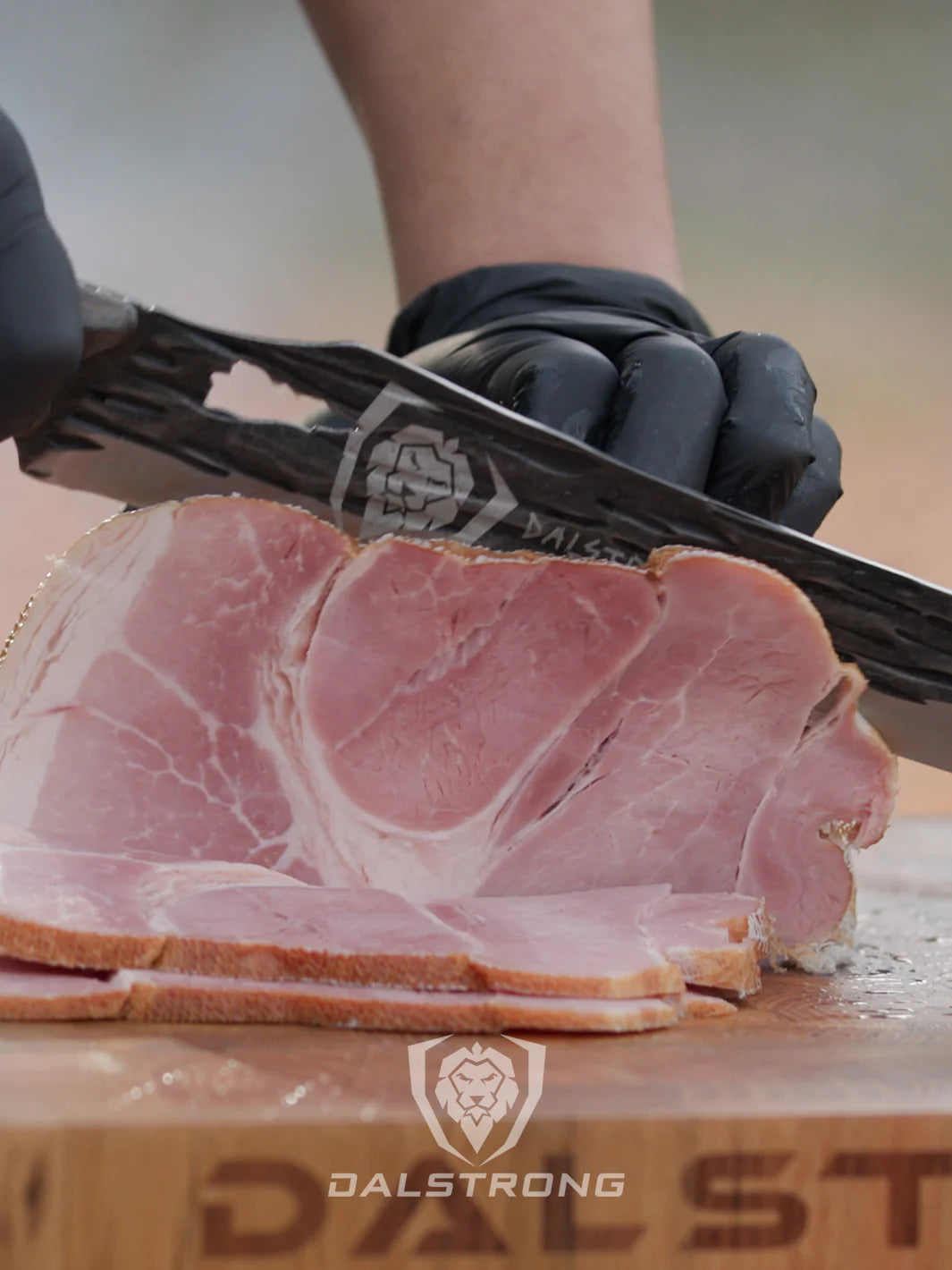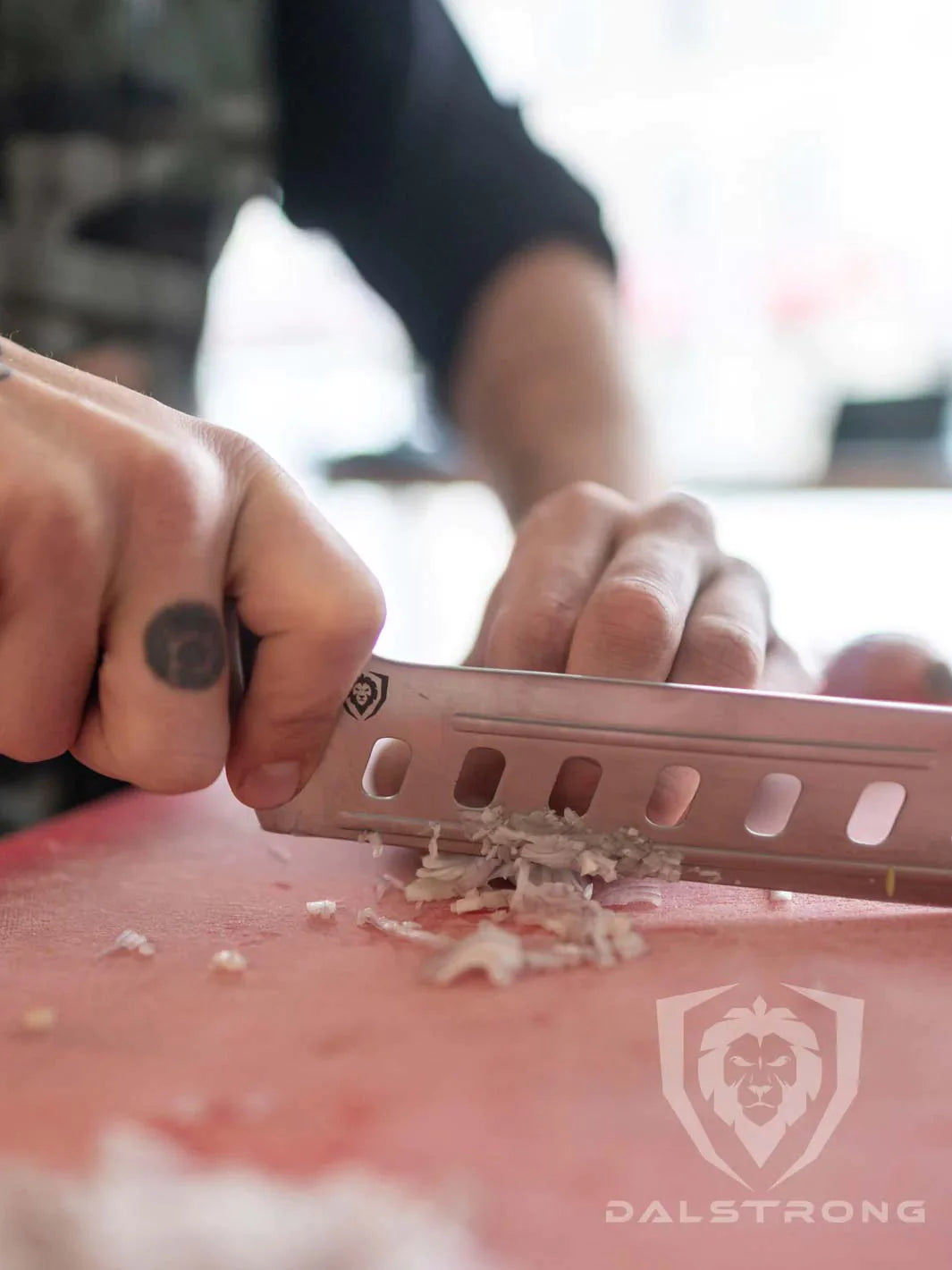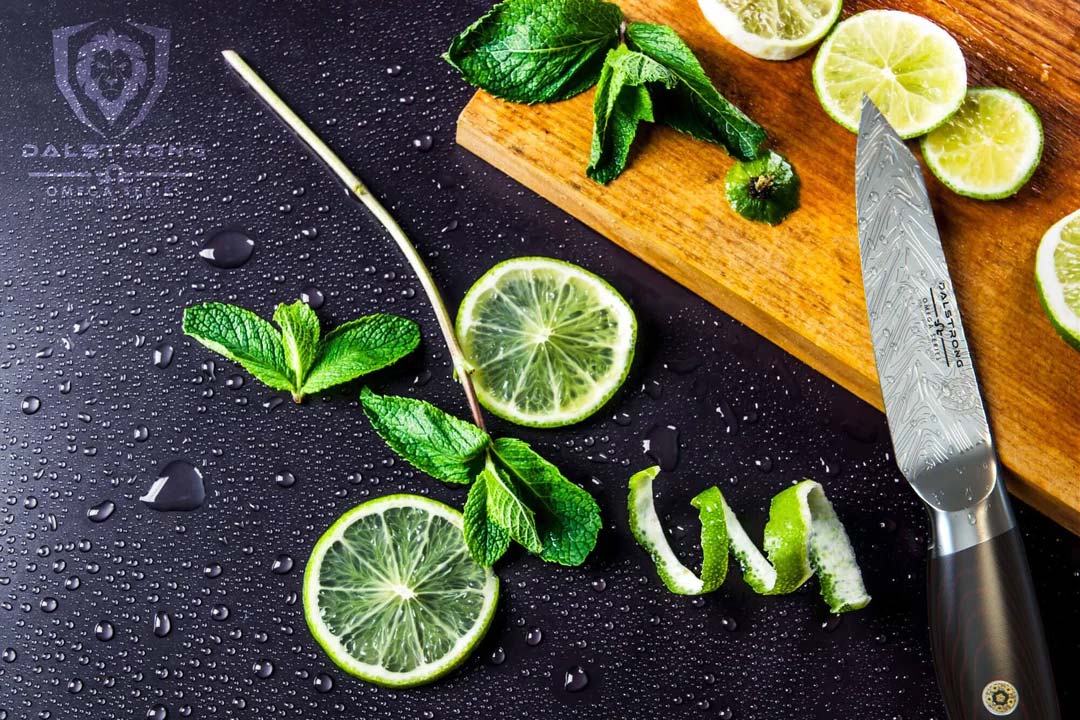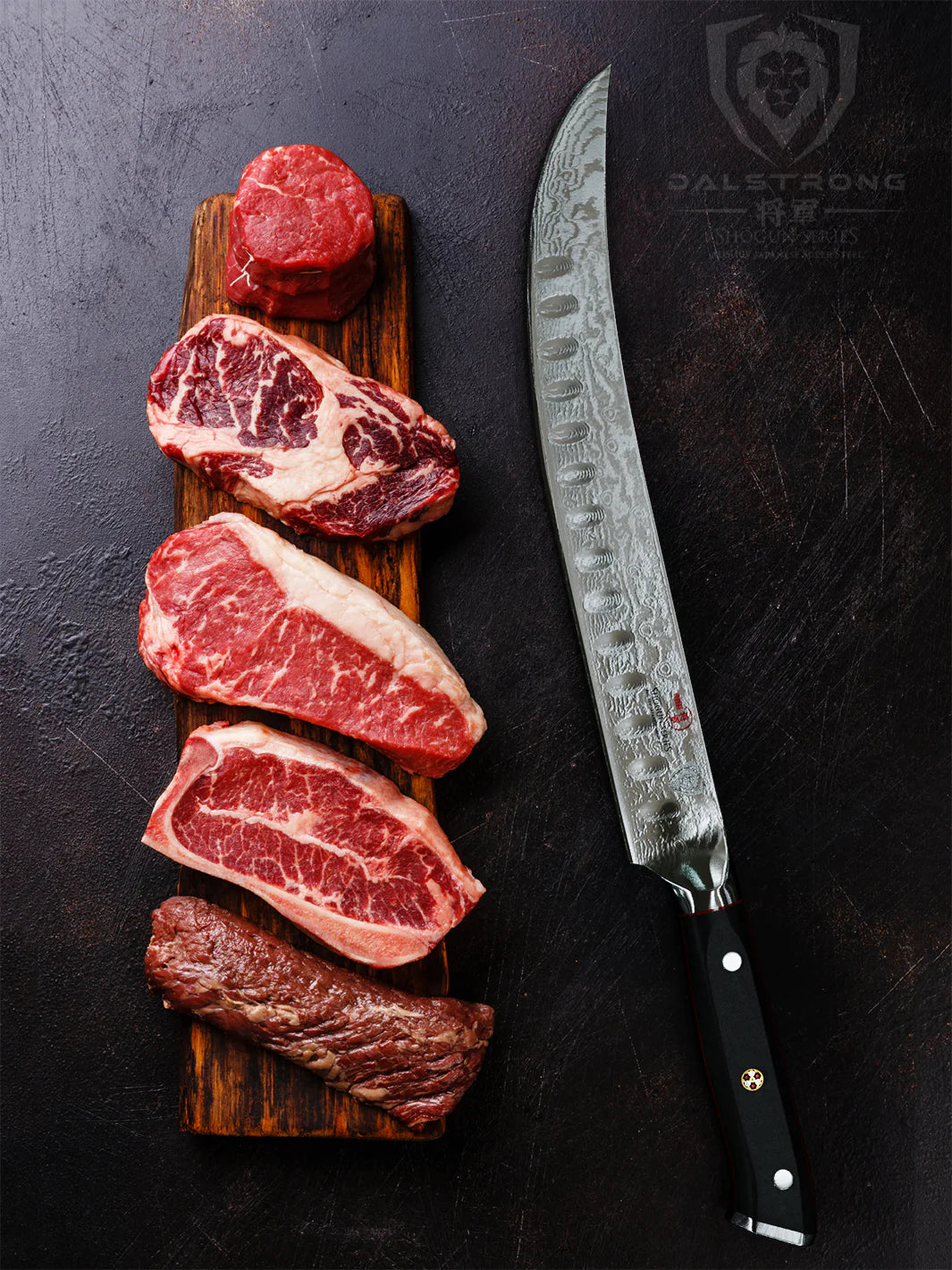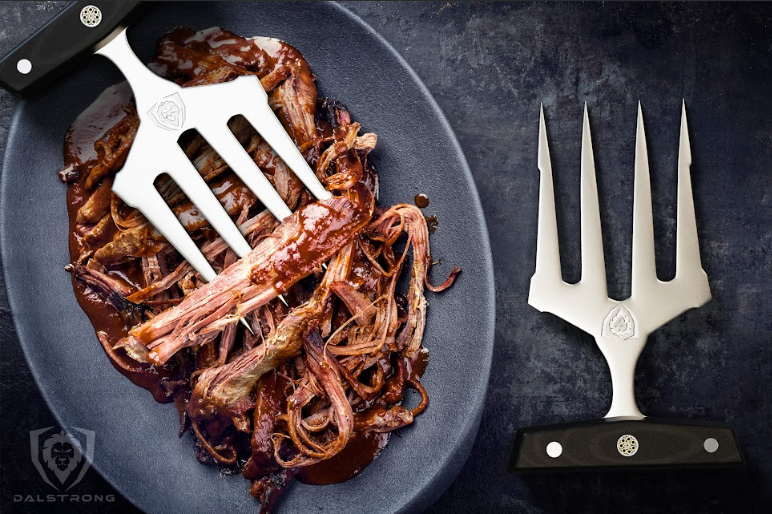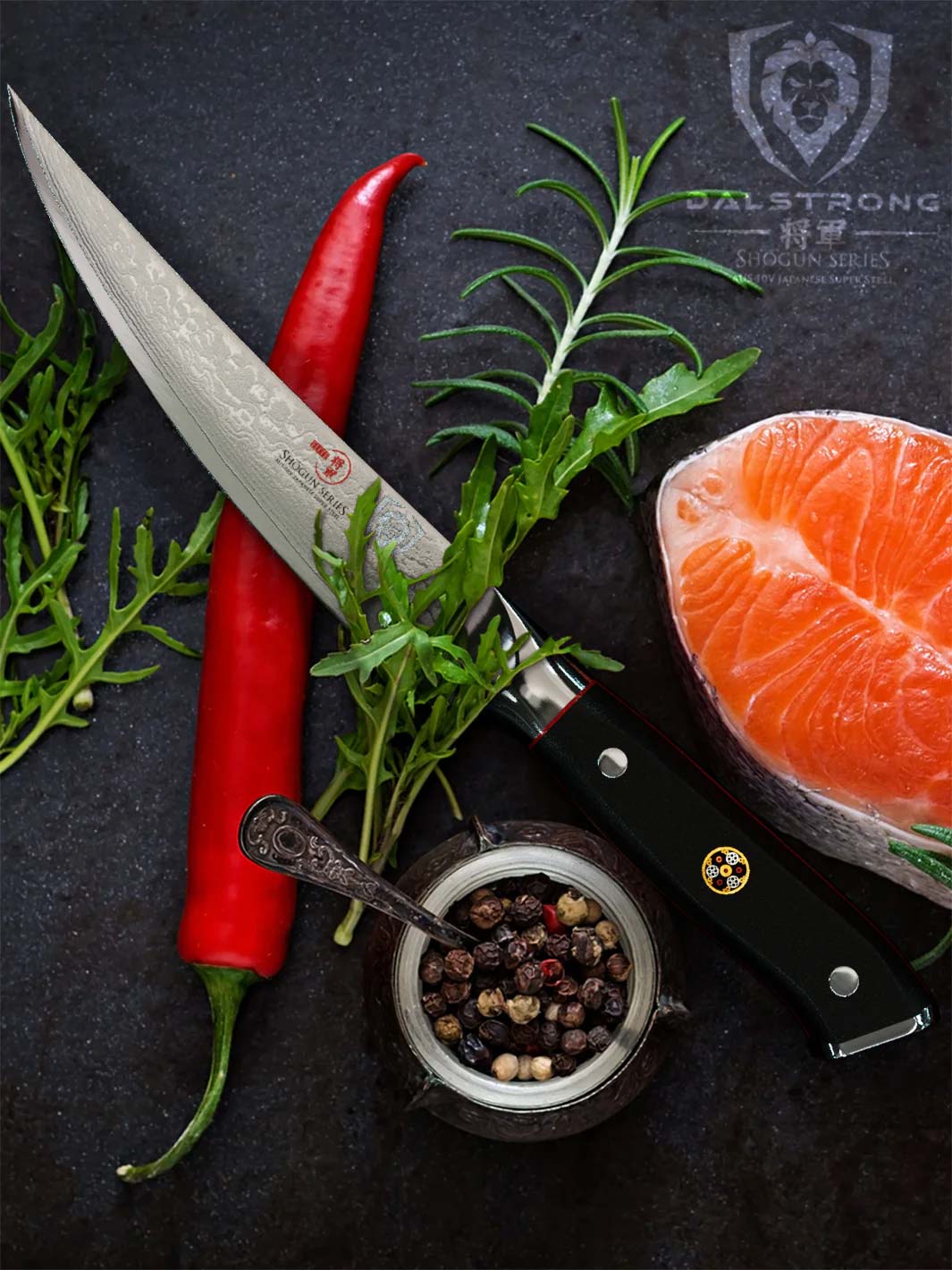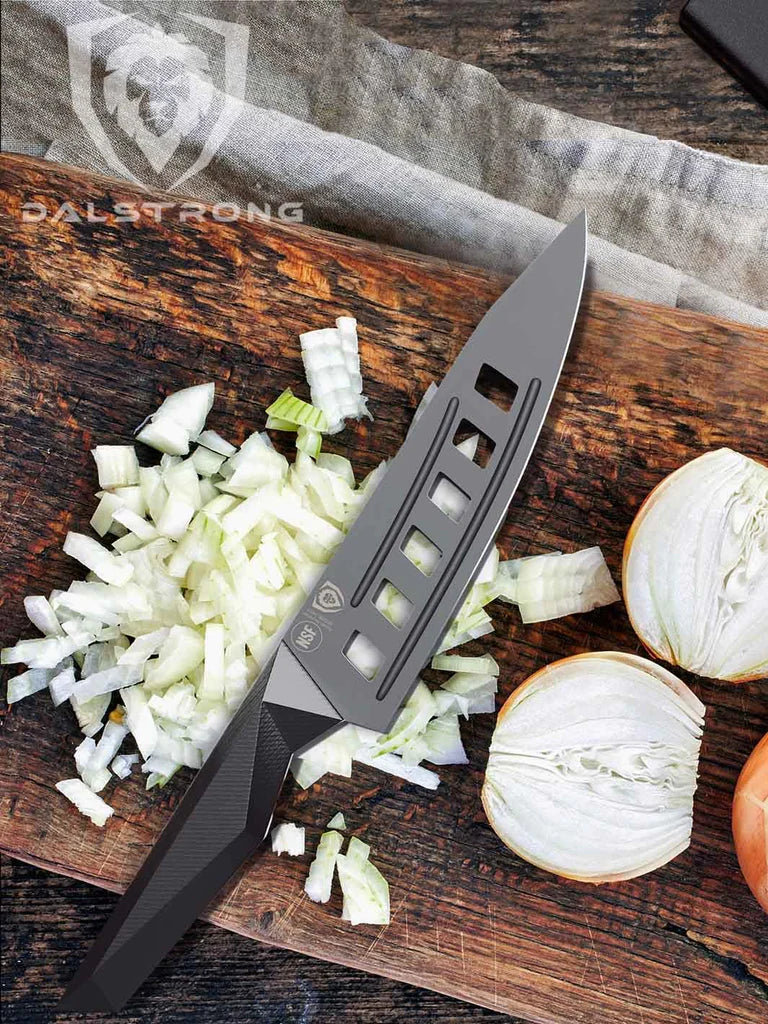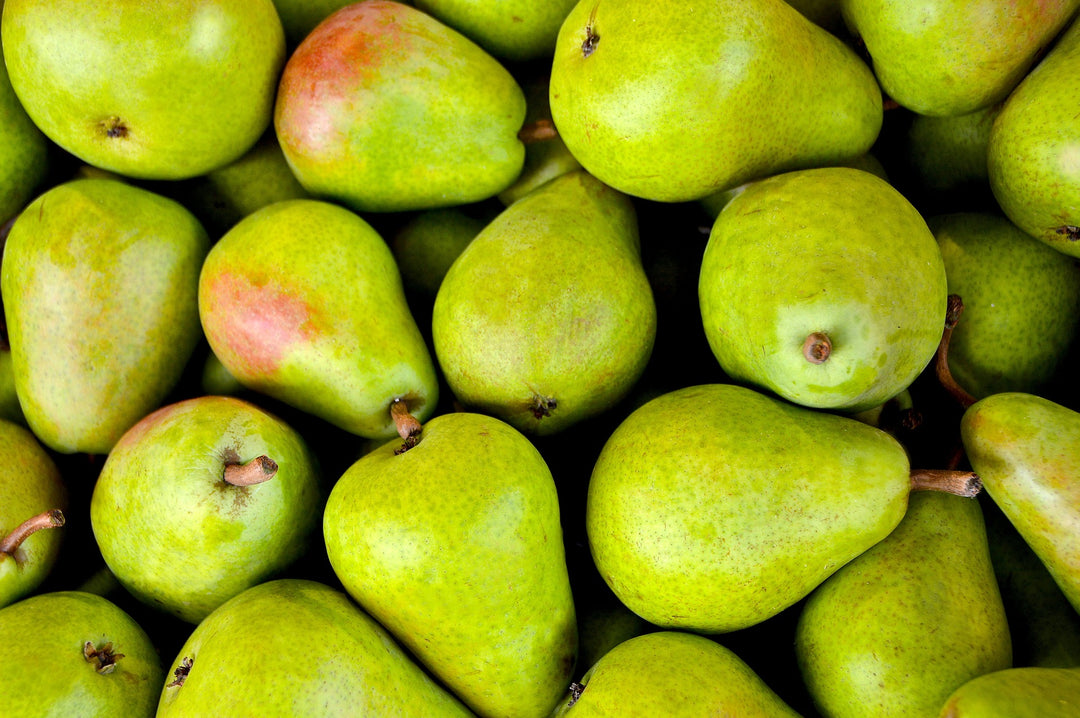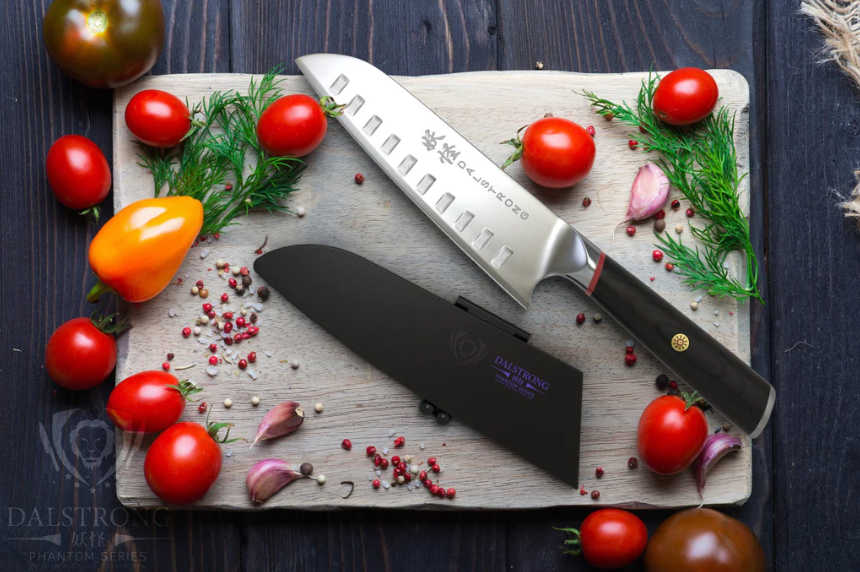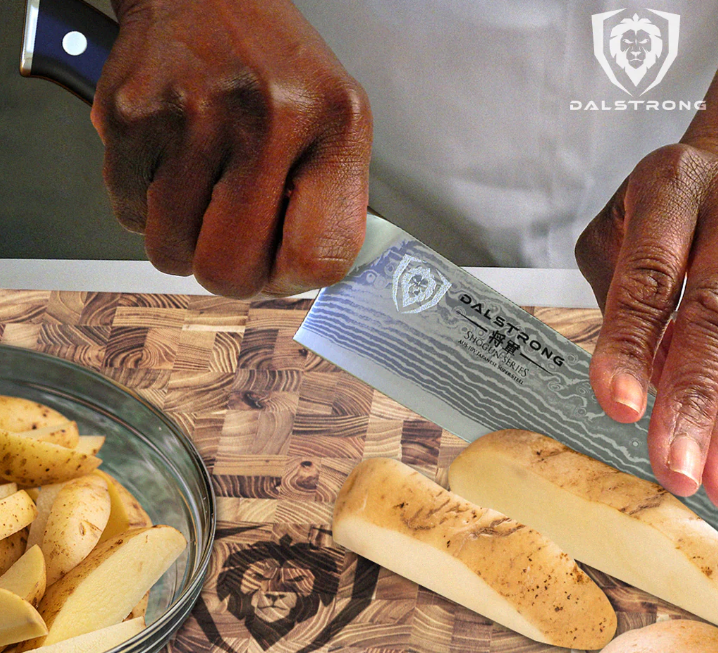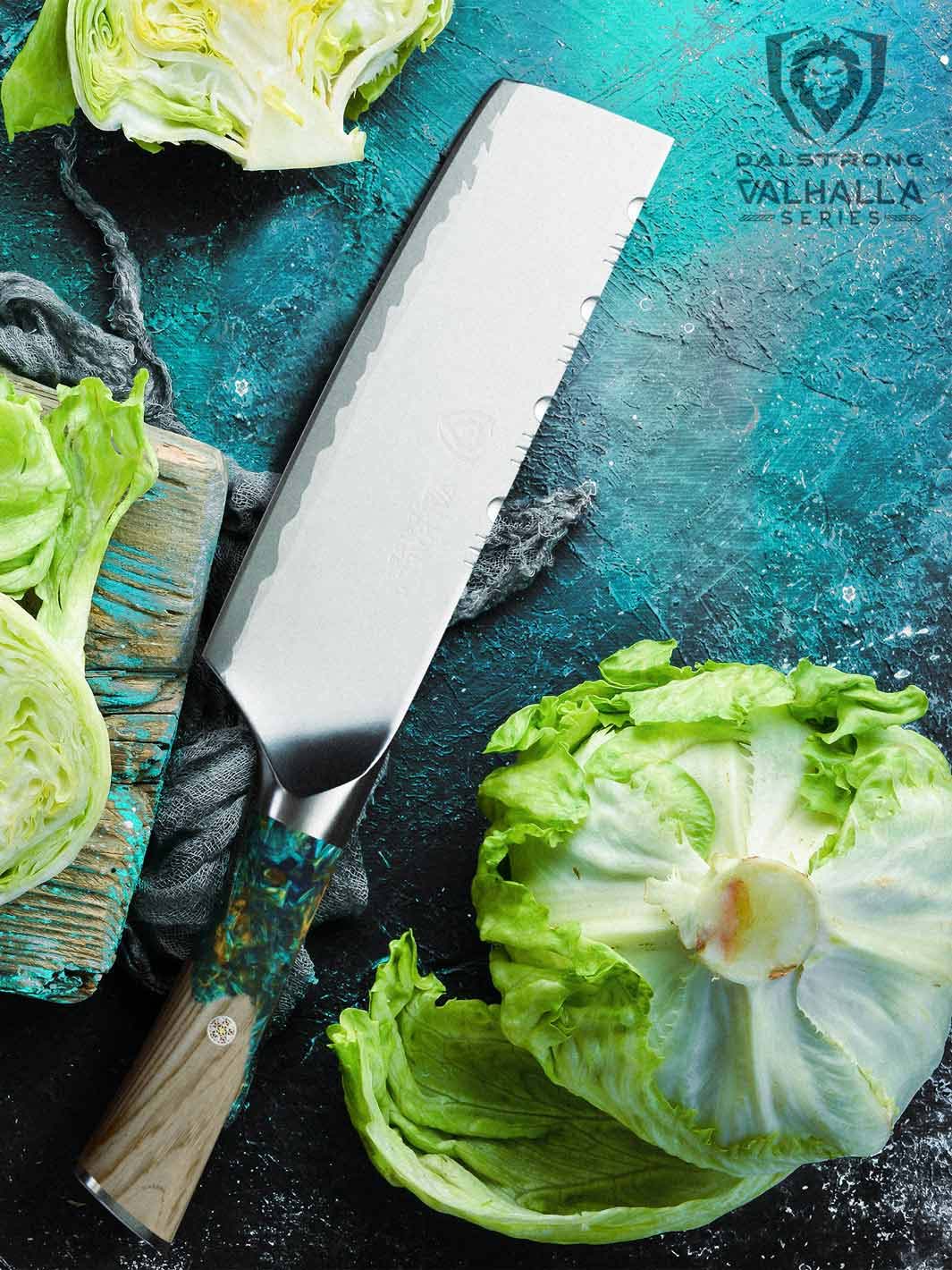How To Cook Salmon In The Oven
How to Cook Salmon in the Oven
- Preheat oven according to the recipe directions of your choice, generally 375˚-425˚f.
- Lay a 1-2lb. fresh farm-raised or wild-caught fillet of salmon (skin intact) on a parchment-lined oven sheet pan.
- Remove pin bones from the salmon using a Dalstrong boning fillet knife and kitchen tweezers.
- Drizzle salmon fillet with about 1 tbls. olive oil, and then sprinkle it with kosher salt and several generous grinds of black pepper. Add additional fresh herbs or spices, if desired, according to your recipe.
- Cook salmon in preheated oven. Salmon cooks quickly*, about six minutes per half inch thickness of fish.
- Test for doneness using an oven thermometer. When you remove it from the oven, a filet of salmon should read 140˚f at its thickest point.

Shogun Series 6'' Fillet Knife
Whole 30 enthusiasts love salmon. Salmon is keto-friendly. Salmon can be tucked into parchment packets, steamed in foil, sizzled with vegetables in sheet pan dinners, or slow roasted in a skillet while you help the kids with homework (or set a candlelit table for two).
You see where we’re going with this–without a doubt, salmon is a super food, and cooked in the oven, salmon makes a super choice for a super easy supper. There are hundreds of different ways to cook salmon, from baked salmon recipes to preparing salmon in foil. Below are our selection of best recipes and everything else you need to know.
1. The Tools You Need To Cook Salmon In The Oven

Dalstrong 7.5" Professional Slotted Fish Spatula
In order to cook salmon in the oven you’ll need just a few tools:
Use a baking sheet pan large enough to hold your fillet. What’s known as a “½sheet pan” is just right for most ovens. For smaller, apartment-sized ovens, a ¼ sheet pan will do the trick. (This smaller pan is super handy for so much, like toasting nuts, broiling garlic bread, or even baking a one- or two-person sized midnight batch of cookies). Even toaster ovens work well for oven-roasted salmon, and they generally come with their own scaled-down sheet pans. For a toaster oven, you’ll need to cut your salmon fillet into smaller pieces. Consider scaling the recipe by half for toaster oven cooking.
Parchment paper prevents sticking and saves on clean up. Parchment paper is inexpensive and endlessly useful in the kitchen. You’ll find it online and at any grocery store.
A large, 10” or 12” stove-to-oven skillet is the perfect tool for pan-frying salmon skin to crispy perfection and finishing the fillet under an oven broiler.
A fish spatula and a pair of tongs will serve you well. A salmon fillet right out of the oven is hot and unwieldy. Handling it with the right tools will prevent burns, and ensure a beautiful presentation at the table. We know you crush it in the kitchen–show off your hard work!
2. Why Choose Salmon?
Salmon is having a heyday among foodies, dieters, “pegans” (pescatarian vegans), and budget conscious families. And with good reason: both Atlantic (farm-raised) salmon and wild-caught salmon are delicious varieties, versatile in recipes, and packed with Omega-6 and Omega-3 fatty acids that nutritional experts teach us are essential for a balanced diet–think good fats for extended energy, heart health, and cholesterol and blood pressure management.
Two complications you may encounter with salmon is the need to fillet a whole fish, and in the filet itself, the tiny pin bones. If necessary, check out a video on how to fillet a fish. Once you’re ready, use a well-sharpened Dalstrong fillet knife to do the job.
When filleting fish, fishmongers will do their best to remove all bones, but occasionally you’ll come across the tiny pin bones lying just under the flesh. Take care of pin bones with a clean pair of kitchen tweezers. With clean hands, brush against the grain of your fillet, locate the tiny bones under your fingers, and extract them one by one with your tweezers.
With a beautiful, de-boned fillet ready for the oven, it’s time to choose your cooking method:
- Oven-roasted salmon at high heat
- Slow-roasted salmon cooked at a relatively low heat
- Pan-fried salmon finished under the oven broiler
3. Simple Oven-Roasted Salmon

Ingredients:
1-2 lb. fresh fillet of salmon, both wild-caught and farm-raised salmon are good choices
olive oil for brushing
1 lemon or lime
salt & black pepper
Method:
Preheat oven at 425˚f.
Lay a sheet of parchment paper on a baking sheet pan, and lay salmon fillet along the center, skin on. Brush the salmon generously with olive oil, and sprinkle with kosher salt and black pepper. If you wish, squeeze lemon or lime juice over the salmon, or lay thin slices of lemon along the top of the fish.
*1 lb. may seem like a lot of fish, but salmon is delicious leftover, either reheated or at room temperature. Roast enough to top a salad for tomorrow’s lunch, or to add cooked salmon to a Sunday morning omelet.
Cook salmon fillet until an oven thermometer reads 140˚ at the center of the fish, about 14 minutes. The FDA recommends cooking salmon to 145˚, and the fish will continue to cook a bit after it comes out of the oven. You’re looking for a salmon fillet that is cooked until just done, and not at all overcooked. Cooking times will depend upon the size and thickness of the salmon fillet, as well as the predictability of your oven. If you don’t have an oven thermometer–no problem. Test for doneness with a fork. When ready, salmon will be flaky and will appear almost opaque.
4. Slow Roasted Salmon Recipe
Samin Nosrat’s Slow-Roasted Salmon
Ingredients:
1-2 lb. fresh fillet of salmon, both wild and farm-raised salmon are good choices
1 lemon
olive oil for brushing
salt & black pepper
Method:
Preheat oven to 225˚f.
Thinly slice lemon and lay along the center of a parchment-lined cooking / baking sheet. Lay a 2lb. salmon filet on top of the lemons. Brush the salmon fillet with olive oil and sprinkle generously with kosher salt and black pepper. Rub with a spice rub if you have a favorite. In this case, make sure to use a larger fillet, as you’ll be cooking the fish for 50-55 minutes. We’ve found that it’s easy to overcook a thinner fillet using this method.
Roast the salmon fillet for 50-55 minutes, until the flesh is flaky when tested with a fork, and barely opaque.
Top salmon with an additional squeeze of lemon juice, or fresh tomato or tropical salsa fresca made from finely chopped red onion, a fresh minced jalapeño chile, ripe tomato or mango, a tablespoon of red wine vinegar, salt and black pepper, and lots of chopped fresh cilantro.
Another classic slow roasting method is known as salmon en papilotte, meaning “salmon in parchment.” An equally easy option, individual salmon fillets (about 6 oz. per person) are enclosed in parchment paper or foil along with flavorful cooking liquids such as white wine with mild onions, and steamed at a low oven temperature. Lots of recipes for salmon en papilotte are available online. Classic combinations include tart lemon and salty capers, whose flavors are absorbed into the salmon as it cooks.
5. Roasted Salmon Tacos Recipe

Ina Garten’s Roasted Salmon Tacos
Ingredients:
- 1½ -2 lb. fresh fillet of salmon, wild-caught or farm-raised salmon are both good choices
- 1 tsp. lime zest
- 2 tsp. chili powder
- 1 tsp. kosher salt
- 4 avocado
- ¼-½ cup lime juice
- Splash Sriracha, to taste
- ½ tsp. salt
- 1 small green cabbage
- 1 hothouse cucumber
- 2 tbls. chopped dill
Method:
Preheat oven to 425˚f.
Lay fillet of salmon skin-side down on a parchment-lined cooking sheet. Combine lime zest, chili powder (or cajun seasoning) , and salt in a small bowl or saucer. Brush salmon with ¼ cup fresh lime juice, and then rub salmon with the spice rub. Roast in a 425˚f oven for 12 to 14 minutes, until just barely done. After removing the salmon from the oven, enclose a handful of flour tortillas in foil and place in the oven to warm while you put together the simple taco fillings.
Mash the flesh of the four ripe avocados in a medium-sized bowl with ¼ cup lime juice, salt, and a splash of Sriracha, to taste. Set aside.
To make a fresh and crunchy green cabbage slaw, halve and core the cabbage, and then slice very thinly with a Chef’s knife or, if you have one, a mandoline slicer. A Santoku blade is also especially effective for slicing and dicing vegetables. Peel and halve the cucumber, and remove the center seeds with a small paring knife. Thinly slice each half of the cucumber and combine with the cabbage, along with 2 tbls. of chopped fresh dill.
Pull the tortillas from the oven. This is a great recipe for gatherings and cookouts. Guests will love assembling their own tacos. Spread each tortilla with some of the mashed avocado mixture, a generous spoonful of cabbage slaw, and top with the flaked, roasted salmon. Add more lime juice or Sriracha, or both. Once again, a large salmon fillet will serve you well if you have a crowd of hungry taco lovers.
6. Cumin Roasted Salmon Recipe
Ingredients:
1 lb. salmon fillet, farm-raised is preferable for this recipe
1 tsp. each: cumin, paprika, ground black pepper, kosher salt
1 tbls. olive oil
This recipe makes use of stove and oven to create a deliciously crispy, spicy, salty crust.
Heat the oil in a large stove-to-oven skillet on medium heat, gas level 5.
Set the oven broiler on High.
Combine the spices well in a shallow bowl.
With a sharp blade, cut the fillet into three equal portions.
Dredge both sides of each piece of salmon in the spice rub, covering as much of the surface as possible. Set all three pieces of salmon in the hot skillet, skin-side down. As the fish cooks, the skin may crackle and spit, so take care not to get burned. Reduce the heat, if necessary. When the fish is cooked about half way through from the bottom (you’ll see the flesh become opaque), about 10 minutes, slide the skillet, uncovered, into the oven to finish cooking, about 5 minutes. Watch the broiler closely to prevent burning. This spicy, salty salmon is especially good served on a bed of quinoa and splashed with a squeeze of lemon.
7. Advice For Beginners

Dalstrong Gladiator Series 6'' Curved Fillet Knife
Once you’ve chosen a salmon oven-cooking method, consider creating your own recipe using complimentary flavor profiles. For example, the combination of lemon, dill, leeks, and garlic butter is a classic, French-inspired flavor profile for salmon. Another combination could be cumin, paprika, black pepper, tahini, and spinach, all flavors of North Africa. The Central American flavors of chile, garlic powder, and lime create a third popular flavor profile. Even a little heat combined with sweet, caramelized maple syrup makes salmon sizzle with flavor.
Be creative and trust your palate. You’ve got this! Salmon is a rich, relatively mild fish. It takes on flavors easily, and is delicious paired with roasted potatoes or a crunchy slaw, or serve it with sticky, steamed rice and bright green grilled bok choy. And if you're hosting a dinner party, check out this handy guide for setting the perfect table.
8. Frequently Asked Questions About Salmon
What's the difference between wild salmon and farm raised salmon?
Either type of salmon is a good bet. The chief differences involve fat content, the possibilities of contaminants, taste, and cost. Wild salmon comes by its pink coloring naturally from the shrimp and krill it feeds on, while farm-raised salmon gets a color boost from naturally-occurring pigments called carotenoids (think carotene, found in carrots, for example).- Farm-raised salmon is higher in calories than wild-caught salmon, but don’t sweat it too much; the polyunsaturated (desirable) Omega-3 and Omega-6 fatty acids are high in both.
- Some studies suggest that the possible contaminants found in the waters that fish swim in are higher among farm-raised salmon.
- Farm-raised salmon has a richer, fattier taste that lends itself to certain recipes, while wild-caught salmon is deeper in color and more pungent in flavor.
- Farm-raised salmon tends to be significantly lower in price, in general, though season and location factor in. A 2-lb. salmon fillet can be pricey either way, but the return in flavor and nutrition for both farm-raised and wild-caught salmon is worth every penny. In fact, specialty wild-caught salmon, like (Chinook) wild Alaskan king salmon, is worth keeping on your culinary radar.
What are best practices for buying salmon?
Varieties of wild salmon may be light or dark red, and may have a pungent or a mild taste when cooked. These factors indicate variety, not excellence. Experiment by choosing a different salmon each time you shop and in time, you’ll learn what you love best. As with any fish, chose salmon fillets that appear plump and moist. Moisture is a good indicator of freshness. Avoid dried or curled-looking fillets, and never settle for fish with an odor.
Should I skin salmon before cooking?
Leaving the skin on a salmon fillet helps to retain moisture as it cooks. Crispy salmon skin is delicious and healthy, but the skin rarely crisps on oven-roasted salmon, so you may want to include the fat in cooking, but leave it on the serving platter.
Is rare salmon safe?
Super fresh salmon is safe to eat at medium or medium rare, though there are always risks to eating fish that may be considered undercooked. Sushi-grade raw salmon is another conversation, and is held to a different standard. Read up on this subject for guidance. The Dalstrong site offers a fantastic post on Sushi A to Z.
What temperature to cook salmon?
The FDA recommends cooking salmon to an internal temperature of 145˚ F; cook 4-6 minutes per ½” thickness. Take great care with frozen salmon but keep in mind that salmon continues to cook after it’s been removed from the oven, so pulling your oven-roasted salmon fillet out of the oven at 140˚ and allowing it to rest for five minutes is acceptable.
How do I serve leftover salmon?
Cooking “too much” salmon is always the way to go. Cold roasted salmon is delicious and healthy on green salads. Flaked, leftover salmon is tasty in fried rice. Much like tuna, a salmon salad made with finely chopped onions, celery, and dill, and combined with a spoonful each of mayonnaise and capers is lunch perfection. And how about salmon cakes? Your nutritionist will have no complaints and your taste buds will cheer!
What's the difference between baked salmon and roast salmon?
Oven baked salmon is cooked at a lower temperature of 375˚f, roast salmon is cooked at 400˚+.
Check Out Dalstrong Knives Today!
ALL Dalstrong Knives come with a 70 Day Money Back Guarantee
Jenny believes there’s nothing better after a long day of writing than coring apples for a mile-high pie.























































































































